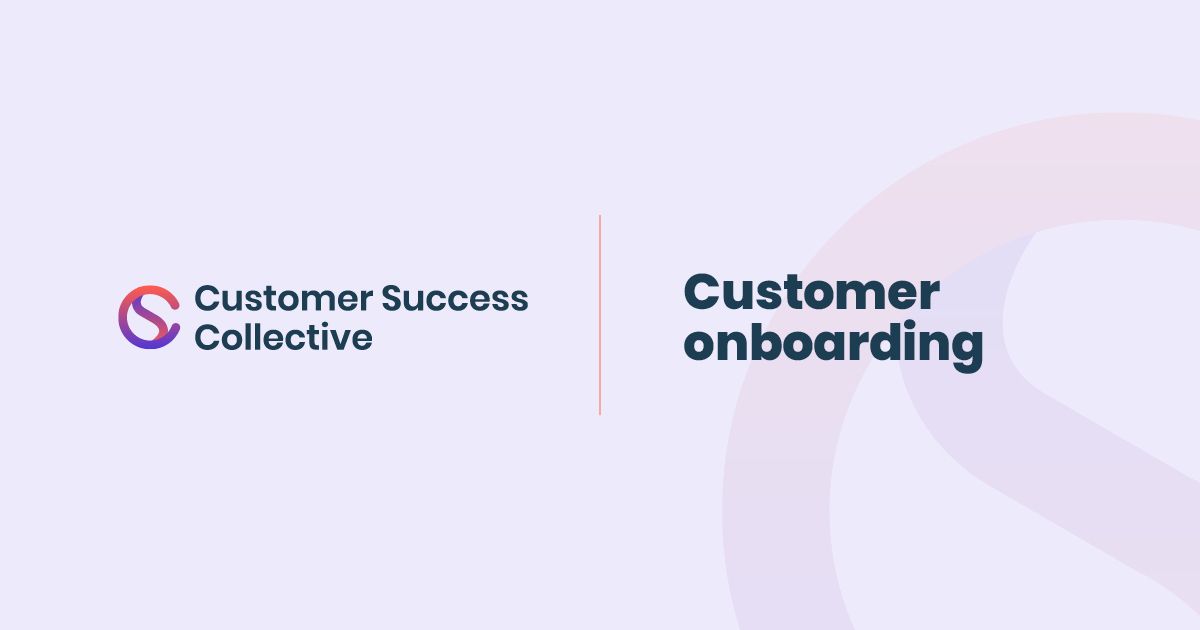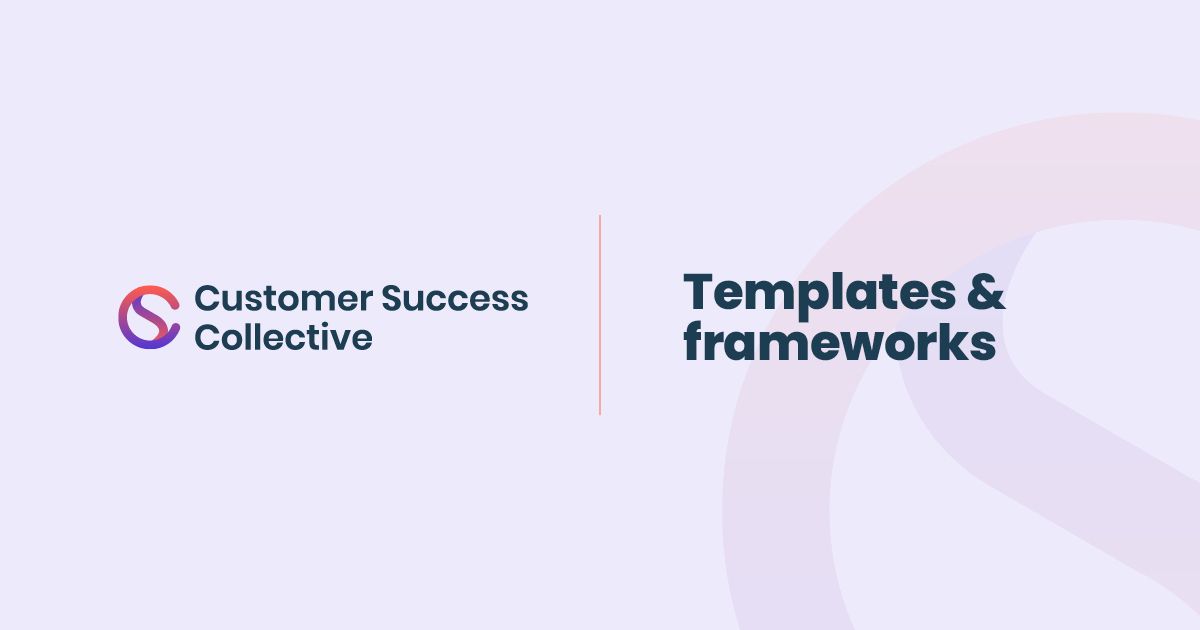In many organizations, sales and customer success exist as two distinct entities, interacting only to hand off accounts and, while this setup may work for some, when both teams are aligned, magic happens.
David Apple, Chief Revenue Officer at Zingtree, Swati Chopra, Sr Director - Enterprise Customer Success, support and renewals at McAfee and Valentine Ollawa Managing Director of Revenue at Mobilize, provided insights on how customer success and revenue can work together to drive growth, adoption, and ultimately revenue at this year’s Future of SaaS Festival.
Q: How are your CSM revenue teams structured currently?
Valentine: We have a sales team, and post-sale we have a customer success manager, and support team members. Our customer success manager is full-service in the sense that they’re not just client consultants, they also own the revenue relationships.
This happens post-sale, and includes upsells and renewals. Net retention is also one of their key metrics.
Swati: We have our renewals team, we have our sales team, and we also have customer success managers.
Our customer success manager’s KPIs are based around adoption and value realization.
Renewal is a byproduct of adoption and consumption, so we focus a lot on that KPI for CSMs. They’re comped and given a fixed base plus bonus while our renewals team works on the commission side, so how they account is different. But yes, I think the responsibilities are very much in line with what Valentine just mentioned.
David: Our entire company has just over 20 people, so we don't have as much specialization. Building these teams from scratch, you always start with one salesperson and one post salesperson, then you start specializing.
Our sales team and the post-sales team have customer success support, and we have an implementations team as well for those larger accounts that have more sophisticated implementations.
That's how we're structured at the moment, but as we scale we'll probably look more and more like Swati’s team.

Q: What’s the purpose of these two teams, and how do they relate to each other?
Swati: The purpose of the revenue team is to grow the revenue, and then expand further.
The major goal of the customer success function is to make the customer successful; that's why we call it customer success.
We should be asking ‘why did they purchase that product or that particular service? What’s the use case? Have we delivered that use case and have they actually got the value out of that use case?’ That's the major goal, and we can define any KPIs around that.
David: The only thing I would add is that ultimately, for all of us, our purpose is to build a great company. That's what we're all trying to achieve. Sometimes that purpose can get a little bit lost, sometimes metrics can make us too short-term focused, and we're not thinking of the long-term success of our company or vice versa. Sometimes the metrics aren't giving us enough motivation to be hustling or giving us a sense of urgency.
The top-level is we want to grow a company through growing our revenue.

Q: How do your teams work together, and how do they meet?
Valentine: It's been an evolution. In the early stages of the company, there wasn't very much collaboration. And that happens in almost every company between the sales and post-sales functions, because in a lot of ways they’re incentivized differently and motivated differently.
Collaboration begins to fine-tune itself when, at leadership level, you start to understand how they’re incentivized. Until you have a clear picture of their incentive structure, you won't motivate people the right way to actually collaborate.
A lot of times, we go back to looking at how we restructured to be successful or restructured to drive some of our top goals of being a sustainable organization, whether from a revenue standpoint, or doing great work for our clients so that both sides have the same understanding of what it means to drive customer success and drive revenue.
We implemented frequent meetings, whether those were on a weekly or bi-weekly basis, with representatives from either team sitting on the other side, and each team has their own weekly meetings to offer additional points of view that might be helpful from a CEO standpoint, from a customer standpoint, or for the sales team and vice versa.
We eventually evolved into a model where we created working groups, almost similar to pods where a representative from every function comes together on a weekly basis to really understand how are we building and driving go to market.
I'm beginning to fine-tune and test a number of different approaches to see what may work best for a specific team.
David: I can relate to a lot of that. We formalized that role Valentine was talking about, and we call them ambassadors. It's a fun role, especially for customer success, who don't necessarily sit in leadership meetings. In our team meetings, we start with each ambassador giving a little update of what’s happening on the other side, and this helps facilitate more collaboration cross-functionally.

Q: Do you have any advice on what we can do to help if CS and revenue don’t see eye to eye?
Valentine: You don't always have to agree on everything, but you have to intelligently debate and be able to present facts.
There needs to be one person who has to make the final decision, in some cases, maybe that’s the Head of Revenue who will ultimately take accountability for the decision.
It’s about both sides coming together to understand each other's perspectives and understand the potential impact of that decision. If it's a reversible decision, then why not give it a try?
But if it's crunch time, and close to the end of the quarter, the revenue leader has a lot more pressure, so it's about being mindful of that and finding ways to really communicate as colleagues.
David: I agree that the relationship between sales and CS must be good. Often when it's not good, it comes from lack of alignment, or the way the goals are set and creates friction or territorialism.
What I would probably do if two leaders weren't getting along, is try to understand, first of all, ‘did I set their goals in a way that allows synergies rather than friction?’ and rethink how we set goals and how we create those synergies.
Secondly, take a step back and look at what we’re all trying to achieve; what's our intention? Usually, when you take it back to that level, you realize, well, we're all trying to achieve the same thing, we're just taking different angles to it and, hopefully, that can help iron it out.

Q: Have you been able to identify opportunities when the handover from sales to CS isn’t the best?
Swati: It’s something I’ve seen a couple of times, which is why I focus a lot on onboarding.
Onboarding makes or breaks the entire customer experience.
The opportunities are always there. Let's say we don't have a very good handover from John from the sales team, then onboarding is supposed to happen internally. If that doesn't happen on the sales side, then an external onboarding call is the place where we come to terms with each other, and we define the journey we're gonna take with a customer. This onboarding call should include all the accounts team members and, most importantly, it should include sales.
If customer success have an implementation engineer, they should be there too. We need everyone who is responsible from the customer side to drive the adoption of that particular technology, service, or product, then we need to define the use cases, goals and objectives we’ll be driving.
Setting that stage is a customer success manager’s responsibility at the beginning of the journey itself. Sometimes we don’t get a good handoff from the sales side, because they may be busy or their contact has left the company, or moved on to some other projects.
This is the opportunity to let sales know our success plans for the next three months, six months, or one year of the customer lifecycle; these are the steps we’re going to take to achieve those success plans. They’ll align their resources accordingly with our resources to implement and get those objectives done.
Then it’s about doing the checkpoints every few months to make sure we’re tracking our goals, and doing any course correction as needed and, of course, that we’re aligned with the customer throughout.

Q: How can customer-centric thinking and customer-driven decisions affect revenue teams and vice versa?
David: A customer-centric way to approach managing our customers tends to focus on the leading indicators, like how do we make our customers successful in the first place? If we do that, everything else will follow.
If we're only focused on expansion and retention, I think we're focused on the wrong part of the journey. We need to know what's really a lagging indicator. If someone's about to churn and you're putting a lot of effort in to save them, that's the wrong place to be putting in the effort, your effort should be on the leading indicators to prevent them even being in that situation to begin with.
Swati: I agree, rather than being reactive, become productive.
If you are customer-centric, if you're customer-obsessed, you’ll take care of making sure they’re successful, making sure that whatever goals they had defined with their leadership team with respect to your product and service, are achieved. If you do this, it will be an easy renewal.
I'm a big proponent of digitization as well. Add a button to your solution, and renewal is just a click away. Customers will auto-renew if we’ve helped them become successful throughout that journey.
Defining your product, your services, and each of your core functions around the customer will make your company more customer-centric, and your customers more successful.
Successful customers bring in a lot of new business, they'll be part of your panel discussions, they’ll be happy to help with testimonials, and those things go a long way in getting new business. I believe wholeheartedly that customer obsession is the way to go. If we stop listening to the customers, they’ll move on, and there's so much competition out there.
Valentine: Building a customer-centric organization shouldn't always lie with the revenue servicing team. What we've done specifically at my present company, and also at a couple of previous companies, is make sure that our product teams also have adoption metrics that are being tracked to understand how product adoption is driving revenue.
As new functions are being built by product or new features are introduced, there are specific milestone metrics to ensure that adoption is being driven specifically by the product.
This helps to keep product and engineering in tune with what's going on with customers.

Q: What are your top tips for improving that relationship between revenue and CS?
Valentine: The more opportunities you can get both teams to spend in a less formal setting the better. Even in a virtual world, just planning activities that can engage both teams to discuss personal interests and things like that is beneficial.
The leaders of both teams should be well-aligned, have a good sense of camaraderie, and an understanding of the ways their goals reflect their journeys, so they can effectively support each other without being at a place of constant competition or friction.

Q: Are there any online or offline resources that you'd recommend to help gain a better understanding of SaaS sales and customer success best practices?
Valentine: I’d say please do follow David Apple on LinkedIn. He shares a ton of really incredible resources. Also sidebar I saw him present at a PLG conference in San Francisco a couple of years ago, and it was extremely insightful.
David: Thanks for that, I really appreciate it, I wouldn't have put myself as a resource, but I'm very flattered. Thank you.
My advice would be to find people in your city that have similar roles to you. Attending talks and presentations and conferences, you hear a lot of ideas, but sometimes you miss what's really going on under the hood.
Networking with peers outside of conferences is where I feel like I’ve learned the most.
Outside of that, follow companies you admire on social media and check out their blogs.
Swati: I follow a lot of CS and sales communities on LinkedIn. You can ask questions based on your industry or company size, and you’ll be able to access advice from someone in the same boat. I personally learned a lot from those forums, and I also contribute where I can.




 Follow us on LinkedIn
Follow us on LinkedIn



